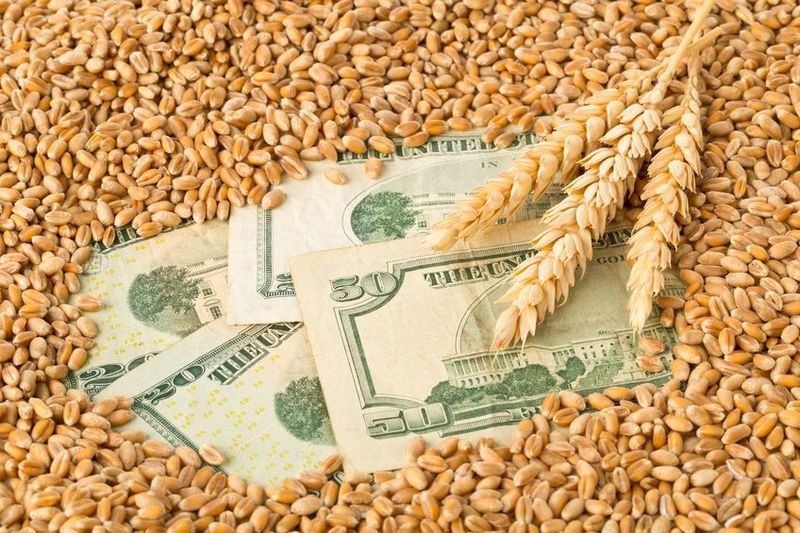Tight supply will keep wheat prices high in the year ahead, says CEO of agriculture-ETF company Teucrium

Wheat supplies are likely to be tight for at least another year despite record global harvests, as strong demand erodes stockpiles and Russia’s war in Ukraine makes markets unpredictable.
That will keep price volatility high, according to the CEO of a company that issues exchange traded funds, including a popular wheat-trading vehicle.
“Unless we get a record harvest in the southern hemisphere, the stocks-to-use ratios globally will probably continue to tighten,” said Sal Gilbertie, CEO and chief investment officer for Teucrium, which issues several agriculture ETFs including the $378 million Teucrium Wheat ETF WEAT, +0.12% and the $215 million Teucrium Corn ETF CORN, -0.64%. The stocks-to-use ratio represents the amount of a crop that will be available at the end of a crop year, divided by total usage.
Headline-risk volatility was on display two weeks ago, when Russia initially decided to halt participation in a U.N.-brokered deal allowing ships carrying Ukrainian grain safe passage through the Black Sea. Wheat prices W00, -0.43% then shot to two-week highs but reversed as Russia agreed to resume its participation.
News reports say Russian President Vladimir Putin said the country reserves the right to leave the deal if Ukraine violates it. The Black Sea Initiative, as it is called, is set to expire in mid-November, and a news report citing Russia’s Tass news agency said the deadline extension is a separate issue .
Despite Russia’s stance, Gilbertie expects the country ultimately will allow grain to move and that it will renew the deal. The deal benefits Russia more than it does Ukraine, he said, adding, “watch Russia’s actions, not its words.”
Russia’s wheat is important to global grain supplies as shipments from the country aren’t affected by Western sanctions. Except for in Canada and Russia, exports are falling elsewhere.
The U.S. Department of Agriculture (USDA) says the U.S. stocks-to-use ratio is at 30%, and globally it’s 33% — both figures are at their lowest level since the 2013-2014 crop year.
Beginning with the 2014-2015 crop year, the stocks-to-use ratio for U.S. wheat have ranged between 37% and 55%.
MarketWatch spoke with Gilbertie in an interview. The CEO of Teucrium started his career in commodities with Cargill in 1982, and was an energy and agricultural-commodities trader at several firms including Bear Stearns.
This is an edited transcript.
MarketWatch: You believe Russia will renew the Black Sea Grain Initiative, despite Russia’s flip-flop. Why is that?
Gilbertie: What other choice does Russia have? For every bushel Ukraine ships, Russia ships three or four. Russia is the cheapest wheat in the world. You’re allowed to buy Russian wheat, but what’s holding [some buyers] back is the risk your money will be tied up in some bureaucratic entanglement. And you need to go through what is considered a war zone, the Black Sea, which means your shipping rates are higher and your insurance rates [to buy Russian wheat] are higher. It’s the cheapest place, but it’s also your last choice to buy wheat because it’s just too risky. Russia needs to move their grain because they’ve had two record crops in a row. They’re going to start backing up their wheat. … Watch Russia’s actions, not its words.
MarketWatch: You expect global grain stocks of wheat to stay tight, despite high prices, which normally spurs farmers to plant more.
Gilbertie: Normally when you see prices this far above their cost of production, it only takes one or two seasons for farmers around the world to respond, and then stocks-to-use ratios get back to normal. But this is at least the third year in a row we’re having record global wheat production, so we’re producing more wheat globally than we have had before, but we’re using it, too. The global balance sheet reflects all the wheat in inventory that was grown prior to the [Russian] war. This year Ukraine is planting much less wheat. A year from now, the global balance sheet will be much tighter.
MarketWatch: Other variables may also affect grain prices in the near term. How does the U.S. grain harvest and low Mississippi water levels feed into the big picture?
Gilbertie: The Mississippi River is a real problem, and it’s twofold. There’s the logistical nightmare because it’s happening at harvest. But if the water levels don’t rise in time, all of our stuff will be stored, and buyers will go to South America during their harvest and buy. So farmers will be stuck with their inventories for longer. What’s going to happen is grain prices in the U.S. could decline temporarily because of logistics problems. So long as we can’t move stuff efficiently on barges, that means our ultimate price, meaning the futures market, is likely to feel some price pressure.
MarketWatch: Teucrium is known for its agriculture ETFs. The wheat ETF has been a big hit with investors, though, until recently, similar securities have been niche products. Who uses the ETFs?
Gilbertie: It’s half-owned by retail people self-directing, and about half-owned by RIAs [registered investment advisers] and money managers. We’re not an institutional product. [What Russia’s war] has done has allowed people to think about commodities not just as gold and crude oil. People now understand that grains are really important, grains are everywhere in your life, and you can easily add them into your portfolio because they’re ETFs.
Tags: Ukraine, Russia, grain, wheat, Black Sea, shipments, demand, record global harvests
Read also
The 21st International Conference BLACK SEA GRAIN.KYIV took place in Kyiv on April...
Europe’s fruit farmers worry as unseasonal frosts threaten harvests
Ukraine has 4 million tons of sunseed left by the end of the processing season
The Paris Olympics menu: more French, more local, less meat
Explanatory meetings between the European Commission and Ukraine on agriculture ha...
Write to us
Our manager will contact you soon












